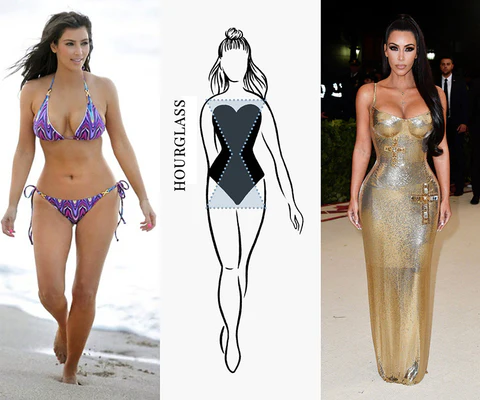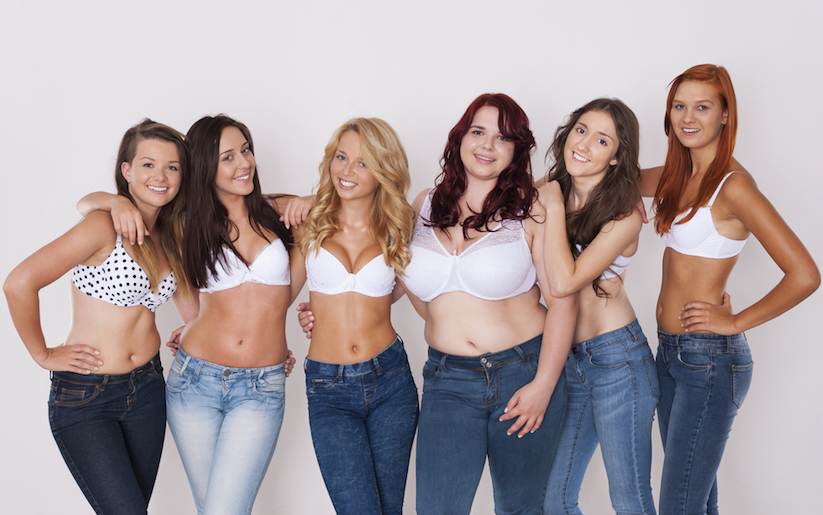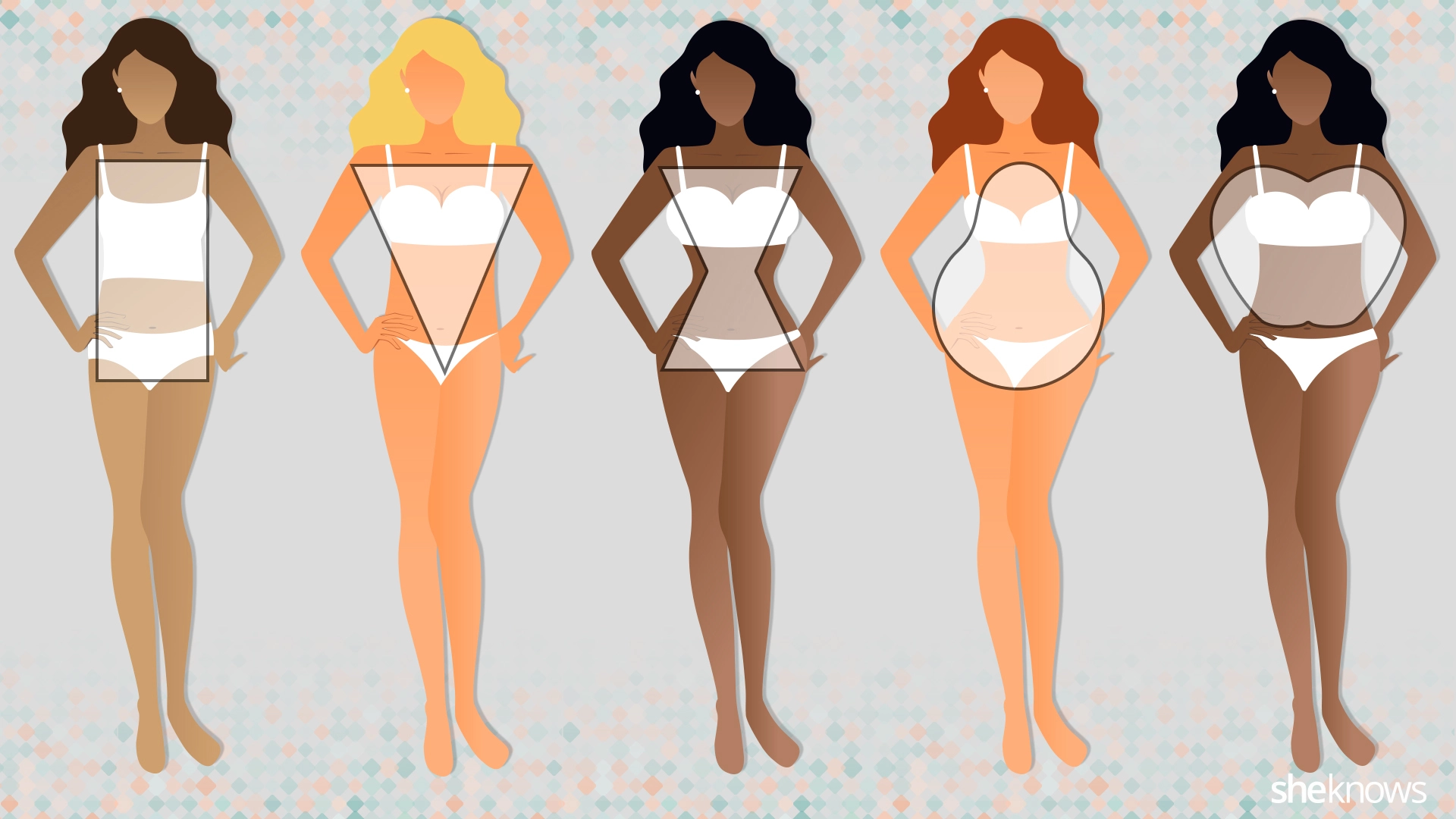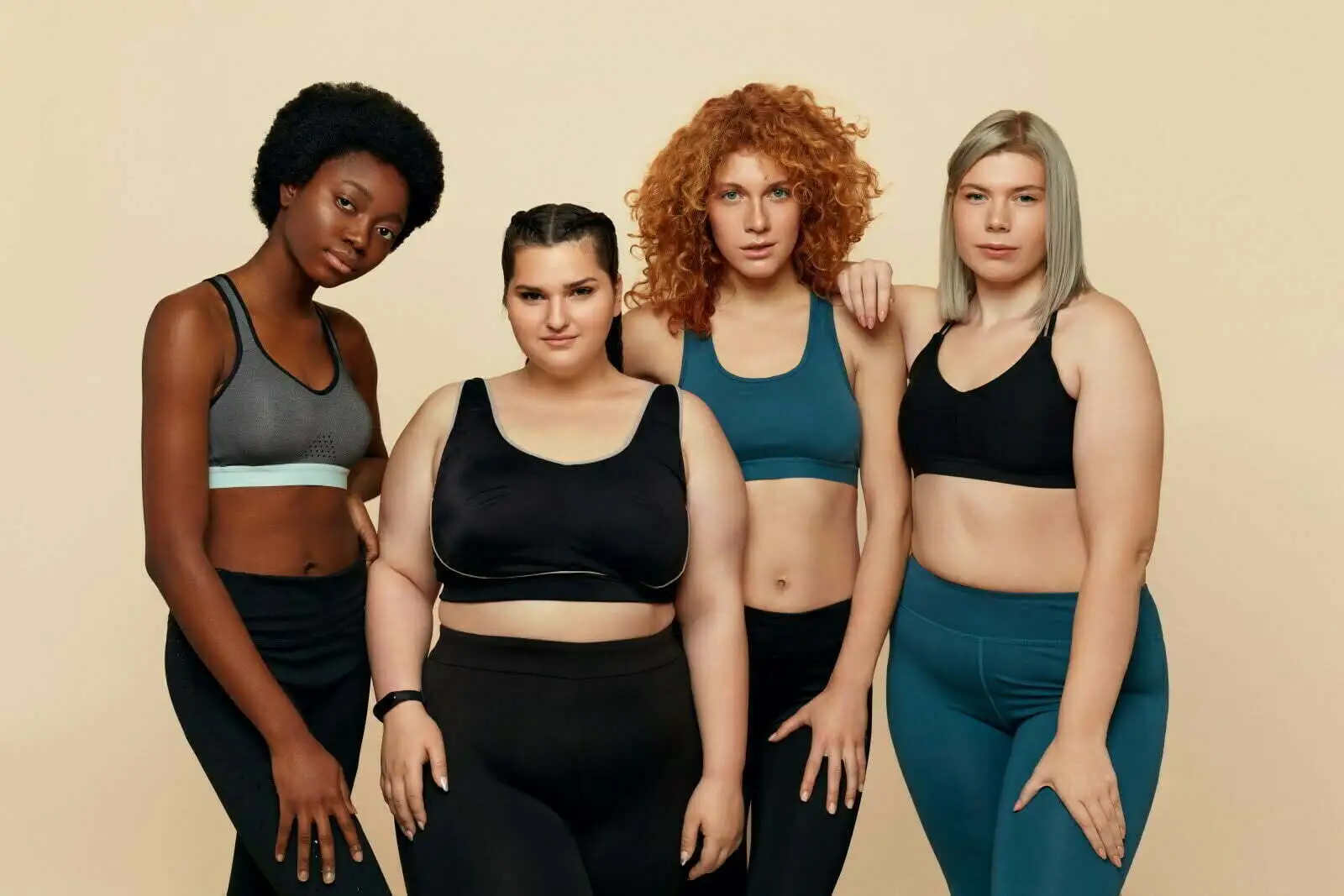Contents
What Are The Different Female Body Types?
There are several ways to categorize female body types, but some of the most common classifications focus on the distribution of fat and muscle throughout the body. Here’s a breakdown of some common female body types:
1. Hourglass:
Balanced bust and hip measurements with a well-defined waist that’s narrower than both. This creates a curvy silhouette often considered aesthetically pleasing.
Considerations: Hourglass figures can gain weight evenly throughout the body, or it might accumulate more in the hips and bust first.
Famous Examples: Scarlett Johansson, Sophia Vergara

2. Pear:
Narrower shoulders and bust compared to the hips, which are rounder and fuller. Weight tends to accumulate in the lower body, creating a pear-shaped silhouette.
Considerations: Pear shapes tend to have slimmer upper bodies and more shapely legs. Cellulite can be a concern for some pear-shaped women due to fat distribution in the thighs and buttocks.
Famous Examples: Jennifer Lopez, Beyoncé
3. Rectangle:
Straight up and down figure with minimal definition at the waist. The shoulders, hips, and bust measurements tend to be similar.
Considerations: Rectangle body types may find it easier to build muscle definition throughout their physique. Achieving a curvier look can be more challenging but not impossible.
Famous Examples: Natalie Portman, Keira Knightley
4. Inverted Triangle:
Broad shoulders and a bust that’s wider than the hips. The lower body tends to be straighter with less curve.
Considerations: Inverted triangle figures might prioritize exercises that target the lower body and core to create a more balanced look.
Famous Examples: Michelle Obama, Renée Zellweger
5. Apple:
Carries weight in the midsection, with shoulders that are wider than the hips. The figure resembles an apple shape.
Considerations: Apple body types may benefit from exercises that target the core and improve posture. Maintaining a healthy diet is crucial for managing weight distribution.
Famous Examples: Oprah Winfrey, Melissa McCarthy
What Elements Influence Female Body Types?
Several factors influence female body types:

-
Genetics: Genetic predispositions play a significant role in determining body shape and proportions inherited from parents and ancestors.
-
Hormones: Hormonal fluctuations, particularly during puberty and pregnancy, can impact fat distribution and body composition.
-
Lifestyle: Diet, exercise habits, and overall lifestyle choices can influence muscle mass, fat distribution, and overall body shape.
-
Age: As women age, changes in metabolism, hormonal levels, and muscle mass can alter body shape and composition.
-
Ethnicity: Different ethnic backgrounds may exhibit varying body types due to genetic factors and cultural influences.
-
Health Conditions: Certain medical conditions and medications can affect weight distribution and body composition.
Is Body Typing Helpful?
Body typing can be somewhat helpful, but it has limitations. Here’s a breakdown of its pros and cons:

Pros:
- General Body Shape: Body typing gives you a general idea of your proportions (like having wider shoulders or a curvier figure). This can be helpful when choosing clothes or to know how certain exercises might affect your physique.
- Fitness Starting Point: Somebody typing systems (somatotypes) can offer a loose starting point for fitness routines. For example, someone classified as an ectomorph (thin and lanky) might prioritize building muscle, while an endomorph (rounder physique) might focus on a combination of strength training and cardio.
Cons:
- Oversimplification: Body types are a spectrum, and most people fall somewhere in between the classic categories (ectomorph, mesomorph, endomorph, or hourglass, pear, etc.).
- Limited Usefulness: Body type doesn’t tell the whole story. Genetics play a role, but lifestyle choices like diet and exercise have a much bigger impact on your health and appearance.
- Focus on Appearance: Focusing on body type can place too much emphasis on appearance rather than overall health and well-being.
Frequently Asked Questions
What is an Hourglass body shape?
An hourglass figure features an evenly defined waist with fuller bust and hips. When one gains weight, it typically shows up evenly across the body, particularly around the bust, hips, thighs, and optionally midsection.
Can you define an endomorph female body type?
An endomorph female body type refers to individuals with softer, curvier bodies. These individuals typically possess a broader waist, large bones, and their weight is often concentrated around the hips and lower abdomen.
Which female body shape is often perceived as the most attractive?
The hourglass body shape is often deemed the most attractive female body shape. It is characterized by a defined waist and fuller bust and hips, with the shoulders, bust, and hip measurements being relatively similar.
What’s the most common female body type?
The most common female body type is the Rectangle or Tomboy body type. This type is distinguished by an even weight distribution and fewer curves. It’s generally considered the healthiest.
Which body part do men most often find attractive?
Studies suggest that men are most attracted to the face, closely followed by a woman’s rear end. Furthermore, women are also likely to be attracted to a man’s chest and hair.

Hello, I’m Ravindra. Over the years, I’ve immersed myself deeply into the world of fitness and health, transforming both my body and mind. Writing has allowed me to share my journey, insights, and expertise with those just starting out and seasoned fitness enthusiasts alike. Beyond just routines and diets, I believe in inspiring others to adopt a holistic approach to well-being.

